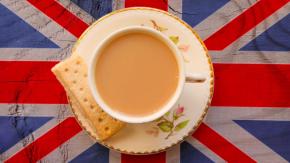How to recognize different English accents
English is the most common official language in the world, with recognized status in over 50 countries - and as such, there are a huge variety of English accents across the globe. Here are some of the most distinctive accents to listen out for.
British – Southern (Received Pronunciation or RP)
A neutral accent mostly spoken in the south-east of England, but widely considered to be ‘standard’ British English pronunciation. In 1922 the BBC adopted this accent as the ‘broadcasting standard’, but now you’ll hear a wide variety of regional accents if you watch their programs.
Key features:
- Long ‘a’ sounds in words such as bath, grass and palm style
- RP speakers never drop the ‘h’ at the beginning of words, like herb
- Words such as news, due and Tuesday are pronounced with a ‘j’ sound
Hear it on screen:
Downton Abbey on Amazon Prime
Friday Night Dinner on Netflix
Scottish
There are different variations of the Scottish accent – depending, for example, if you’re in Glasgow or Edinburgh, but it’s usually an easy one to recognize.
Key features:
- ‘u’ sounds often become ‘oo’ sounds – ‘out and about’ becomes ‘oot and aboot’ ‘g’ sounds are often dropped from words ending in ‘g’ – ‘evening’ becomes ‘evenin’
- Two short words are often run together as one word – ‘did not’ becomes ‘didnae’ or ‘dinnae’
- ‘To’ is pronounced as ‘tae’, ‘do’ becomes ‘dae’ and ‘no’ gets a bit of an ‘aw’ sound at the end making it sound like ‘naw’ or ‘nae’
Hear it on screen:
Braveheart (1995)
Howard in Fresh Meat on Netflix
Welsh
Often described as a lilting, musical accent, that’s strongest in the area around Swansea and more mild around Cardiff.
Key features:
- Lengthened vowels and a singsong sound ‘i’ sounds become ‘e’ sounds – ‘going’ is pronounced ‘go-o-en’
- Rolled ‘r’ sounds
- Some words are changed and repeated – ‘I’m thirsty’ becomes ‘I’m thirsty, I am’ and ‘I like that’ becomes ‘I like that, I do’
Hear it on screen:
Gavin & Stacey on Netflix (you’ll also hear the Essex accent)
Irish
Fun fact: According to a 2018 survey by CEO World Magazine, the Irish accent was voted the second most attractive English accent in the world, after RP British English.
Key features:
- Softened vowels
- Hardened consonants – words like ‘think’ and ‘that’ often turn into ‘tink’ and ‘dat’ ‘i’ sounds change to ‘oi’ sounds – think of ‘Ireland’ as ‘Oireland’
- ‘g’ sounds are dropped – ‘walking’ and ‘talking’ become ‘walkin’ and ‘talkin’
Hear it on screen:
Carnival Row on Amazon Prime
Derry Girls (Northern Irish) on Netflix
American – East Coast vs. West Coast
All American accents have an easily detectable amount of twang, but there are differences between regional accents. These are some common differences between east and west coast accents:
- Words with -or sounds like horrible, horror, and orange are pronounced like their spellings on the west coast, but on the east coast they sound like accent pronounces them as ‘harrable’, ‘harrer’ and ‘arnge’
- Often -ir sounds in an east coast accent turn into -ar sounds – words like IR- sounds. Words like fire and dryer sound like ‘far’ and ‘drar’
- Words with the ‘o’ sound in words like home are pronounced as written on the west coast, but some east coast accents have an ‘ay’ sound to them
Hear it on screen:
Any American films or TV shows – listen to Janice in Friends for a particularly nasal-sounding New York accent
Canadian
If you’re not a native American English speaker, you’ll probably find it quite hard to tell the difference between any American accent and a Canadian one, but there are some differences.
Key features:
- Words with an ‘ou’ or ‘ue’ are typically pronounced ‘oo’ – ‘about’ becomes ‘aboot’ and ‘Tuesday’ becomes ‘Tooz-day’
- The letter ‘z’ is pronounced as ‘zed’, not ‘zee’ like in American accents
- ‘Eh’ (pronounced ‘hay’) instead of ‘huh’ is more common – ‘The weather is nice, eh?’ instead of ‘The weather is nice, huh?’
Hear it on screen:
Fargo on Netflix
Australian
Like any other country, there are a variety of regional accents across Australia, but a general, mellow Aussie accent should be quite easy to recognize. The accent developed from colonists in the south of England and as such, it is loosely related to the modern Cockney accent, but with a bit of a twang.
Key features:
- Words like ‘write’ and ‘drive’ with an ‘i’ sound become more like ‘oi’ sounds, but not overly emphasized
- Hard ‘a’ sounds become softer ‘aye’ sounds, almost like an ‘eye’ sound – in words like ‘way’ and ‘date’
- Harsh ‘t’ sounds at the end of words are replaced with glottal stops – like stopping the end of the word in your throat ‘R’ sounds are dropped and replaced with ‘ah’ sounds – ‘shiver’ becomes ‘shiv-ah’ and ‘car’ becomes ‘cah’
Hear it on screen:
Offspring on Netflix
Secret City on Netflix





